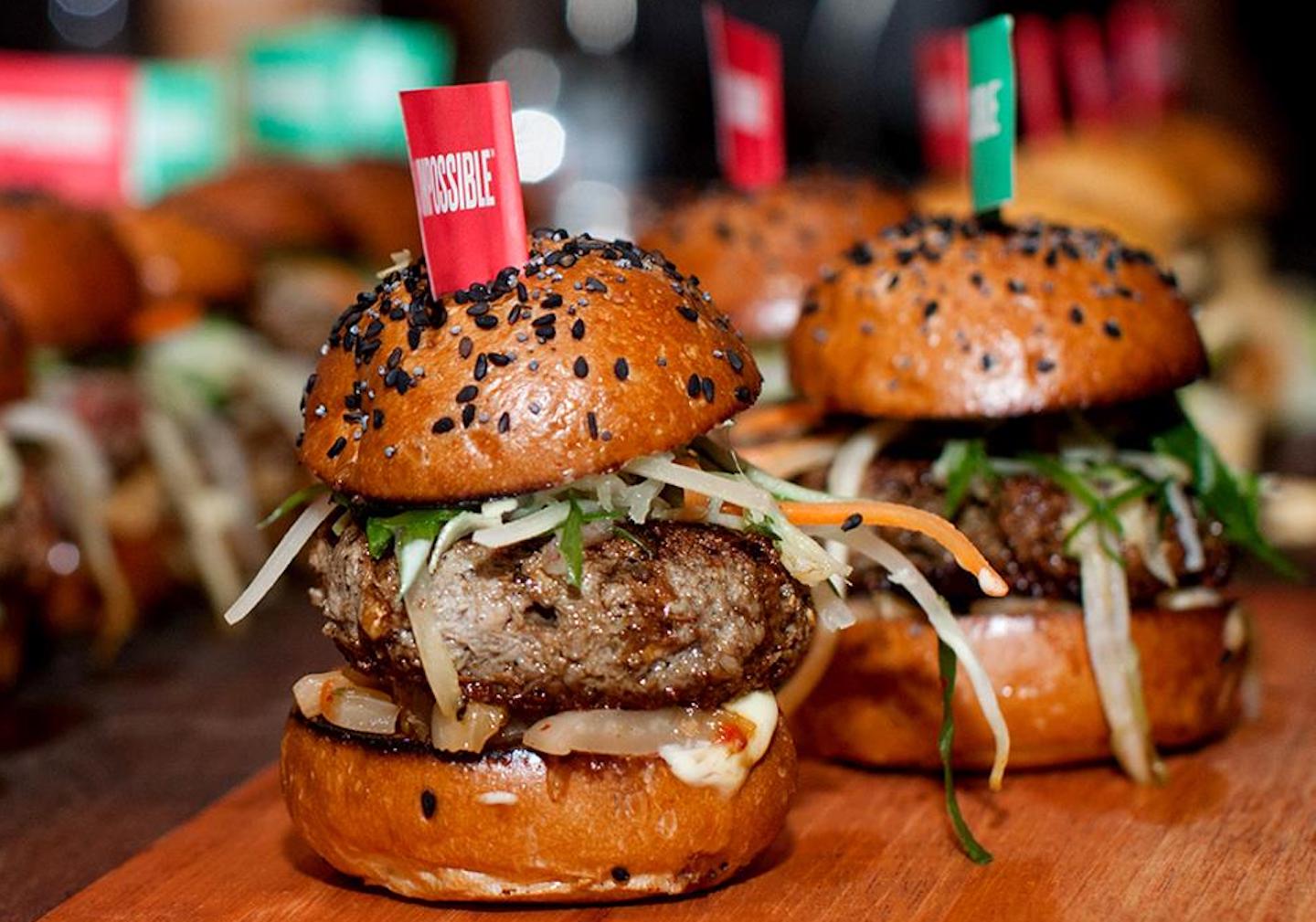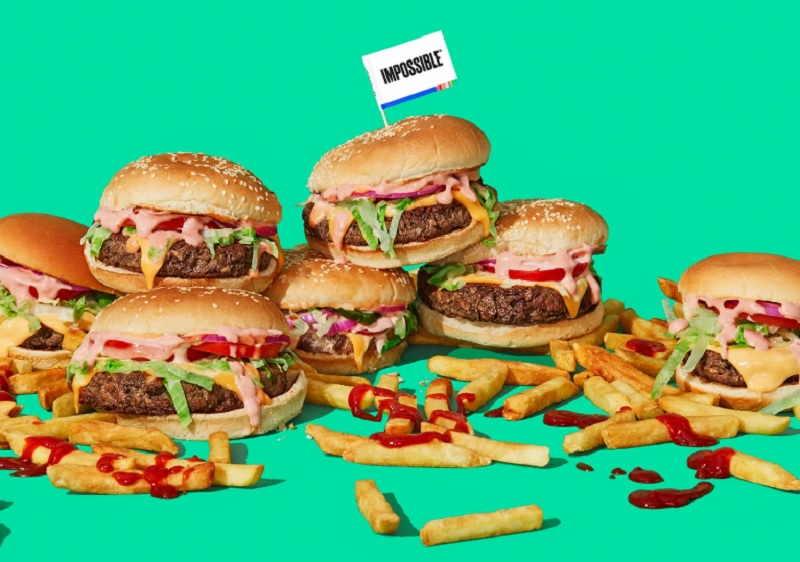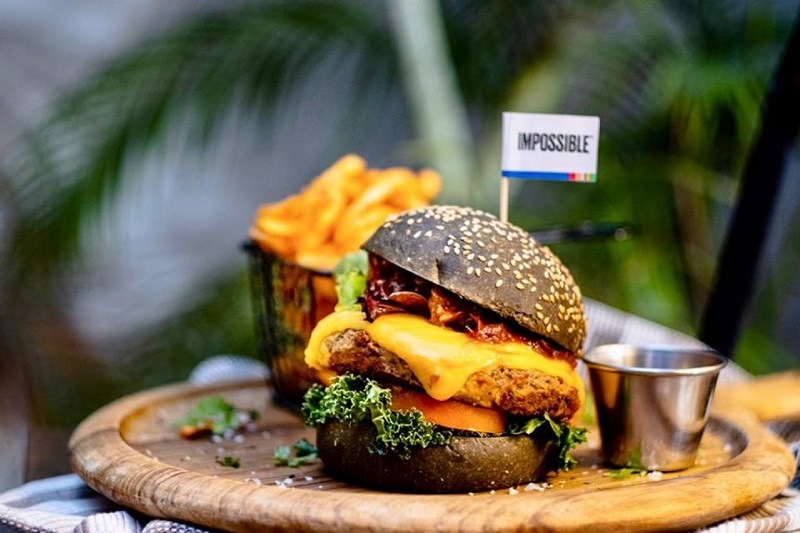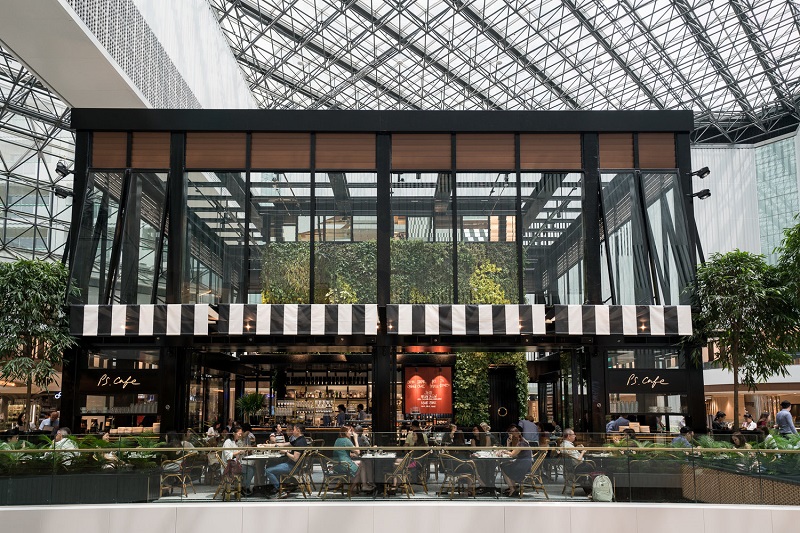
Impossible Foods' plant-based meats are featured in several hamburger chains in the US and in restaurants in Macau, Hong Kong and Singapore (Photo: Impossible Foods)
A recent report by the UN IPCC (Intergovernmental Panel on Climate Change) says the way humans use land has a marked effect on climate change. Land use contributes 23% of human greenhouse gas emissions, the report notes, adding that “some dietary choices require more land and water and cause more emissions of heat-trapping gases than others”.
In short, what we eat has an effect on climate change.
On its website, Impossible Foods says animal agriculture occupies almost half of Earth’s land mass, consumes a quarter of our freshwater supplies and emits more greenhouse gases than all cars, trucks, buses, ships, trains, airplanes and rockets combined. Making meat from plants requires 96% less land, 87% less water and 89% fewer GHG (greenhouse gas) emissions, the website adds.
impossible_burger.jpg

But humans like eating meat, and scientists have linked meat consumption to our becoming human: Energy-dense meat provided a significant advantage over plants, which are less calorie-dense and require a lot more chewing. Eating and processing meat gave proto-humans an evolutionary edge to developing a large, energy-hungry brain, as well as developing smaller teeth and a less muscular jaw. Thus, consuming meat is a trait built into our evolutionary makeup.
The desire to eat meat, however, does not mean that 21st-century humans have to eat meat, given the vast dietary choices available to us, as well as knowledge about nutrition. Hundreds of millions of people around the world are vegetarians by choice, religion or culture.
For the meat-eaters, what if plant-based meat could taste like the real thing, with the sizzle and heartiness, slight bloodiness and mouth-watering appeal of meat? That was what Impossible Foods set out to do. The secret ingredient that made meat taste like meat is heme — an iron molecule found in all life forms. It is abundant in humans as haemoglobin, and in animals as myoglobin, which are proteins responsible for carrying oxygen in the blood. Heme gives meat its red colour and texture, and it is the same molecule whether in plants or in animals.
the_coffee_academics.jpg

Impossible Foods genetically engineered yeast to produce the heme molecule sourced from leghemoglobin — a hemoprotein found naturally in the roots of soy plants. Impossible Foods debuted the Impossible Burger in 2016, and this year, produced Impossible Burger 2.0, an improvement over the first version.
The second version contains more protein and less sodium and saturated fat (from coconut oil) than that of the original. It also has more iron, vitamin B12, fibre and carbohydrate compared with ground beef, and zero cholesterol. It is approved by the US food and drug administration (FDA), as well as Kosher and halal certified.
Impossible Burger patties are featured in several hamburger chains in the US, including Burger King and White Castle, and at the time of writing, in restaurants in Macau, Hong Kong and Singapore. Singapore’s Temasek Holdings Pte Ltd and Hong Kong billionaire Li Ka Shing’s Horizon Ventures Ltd are investors.
How does it taste?
On a recent visit to Singapore, I tried the Impossible Burger, which is served at several outlets such as burger restaurants, gourmet kitchens, cafés and even Wolfgang Puck’s one-Michelin-starred steakhouse, CUT.
pscafe.jpg

At the botanically themed PS Café, the Impossible Burger (S$29.50) is served with cheddar cheese, lettuce, sautéed mushrooms, tomato and crispy onions on a sesame seed bun with a side of fries. It looked appealing, with a brown Impossible Burger patty sandwiched between the other ingredients. When cut, the patty had the resistance of real meat, revealing a pink core and a seared exterior. What’s more, it had the coarse texture and moistness of a real burger when bitten into. Crucially, in terms of taste and flavour, I could not tell that it was not ground beef. Parts of the charred exterior tasted a little bitter whereas charred meat would have tasted like charred meat, but that was the only jarring note.
The Coffee Academics’ Impossible Burger (S$26) is topped with portobello mushrooms, a sunny side up egg, jalapeño, gherkins, tomato, ketchup, mayo and mustard in a charcoal bun with a side of greens and sweet potato fries. The patty was evenly cooked throughout, presenting an even brown colour inside and outside when cut through. As with the other burger, it was indistinguishable from real meat, with the “meatiness” contrasting with the other ingredients, and the satiety of a good burger meal at the end.
To put it into perspective, both burgers I had are better than some real meat burgers, which may have gristle, excessive fat and preservatives, and are not so well put together.
If you really wanted to pick hairs, you could level fine criticisms, but that is only true if you knew you were eating a plant substitute. Given a burger, it would not be possible to say this is not meat. And that is the point, is it not? Impossible? Try it for yourself.
This article first appeared on Sept 2, 2019 in The Edge Malaysia.


